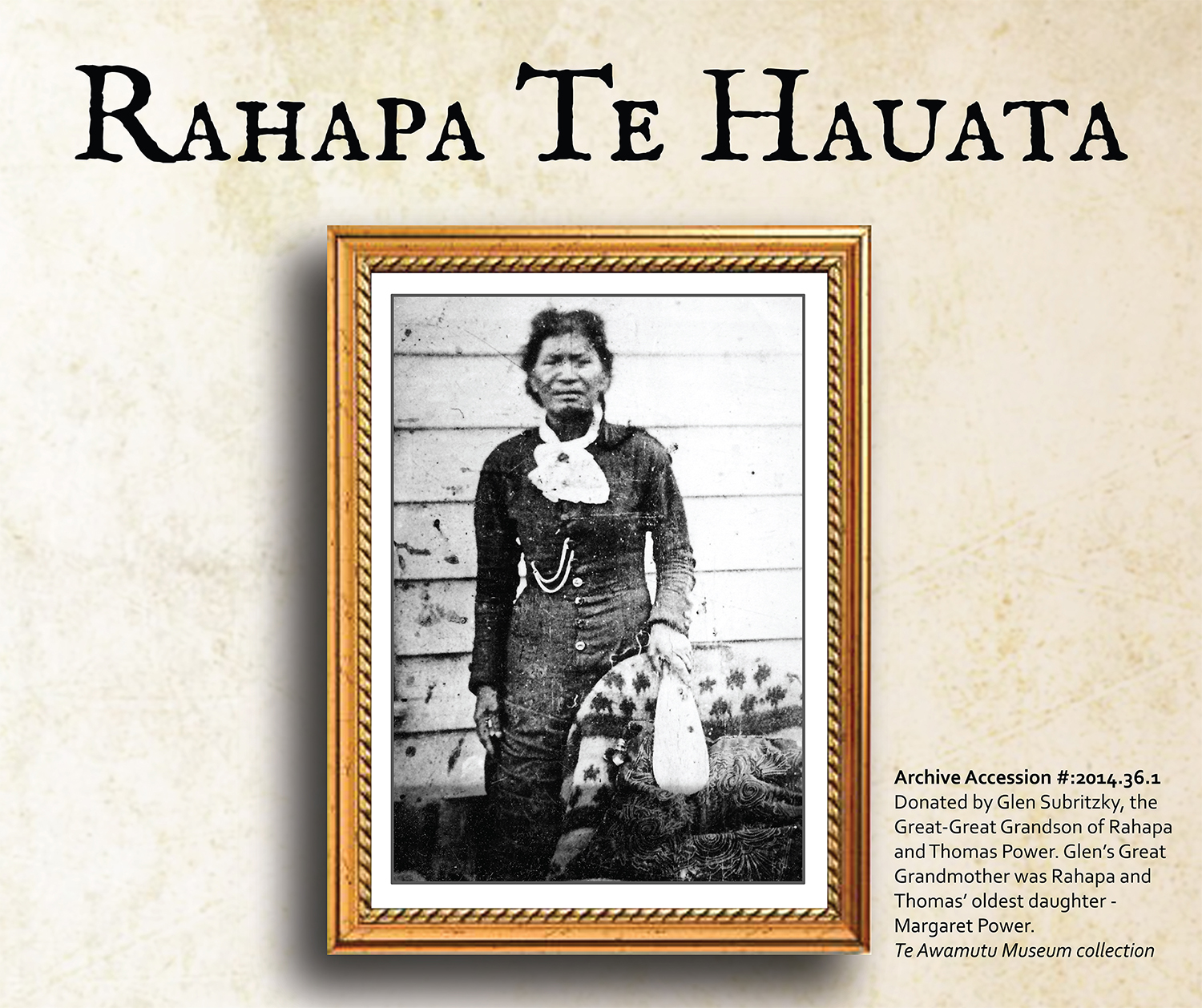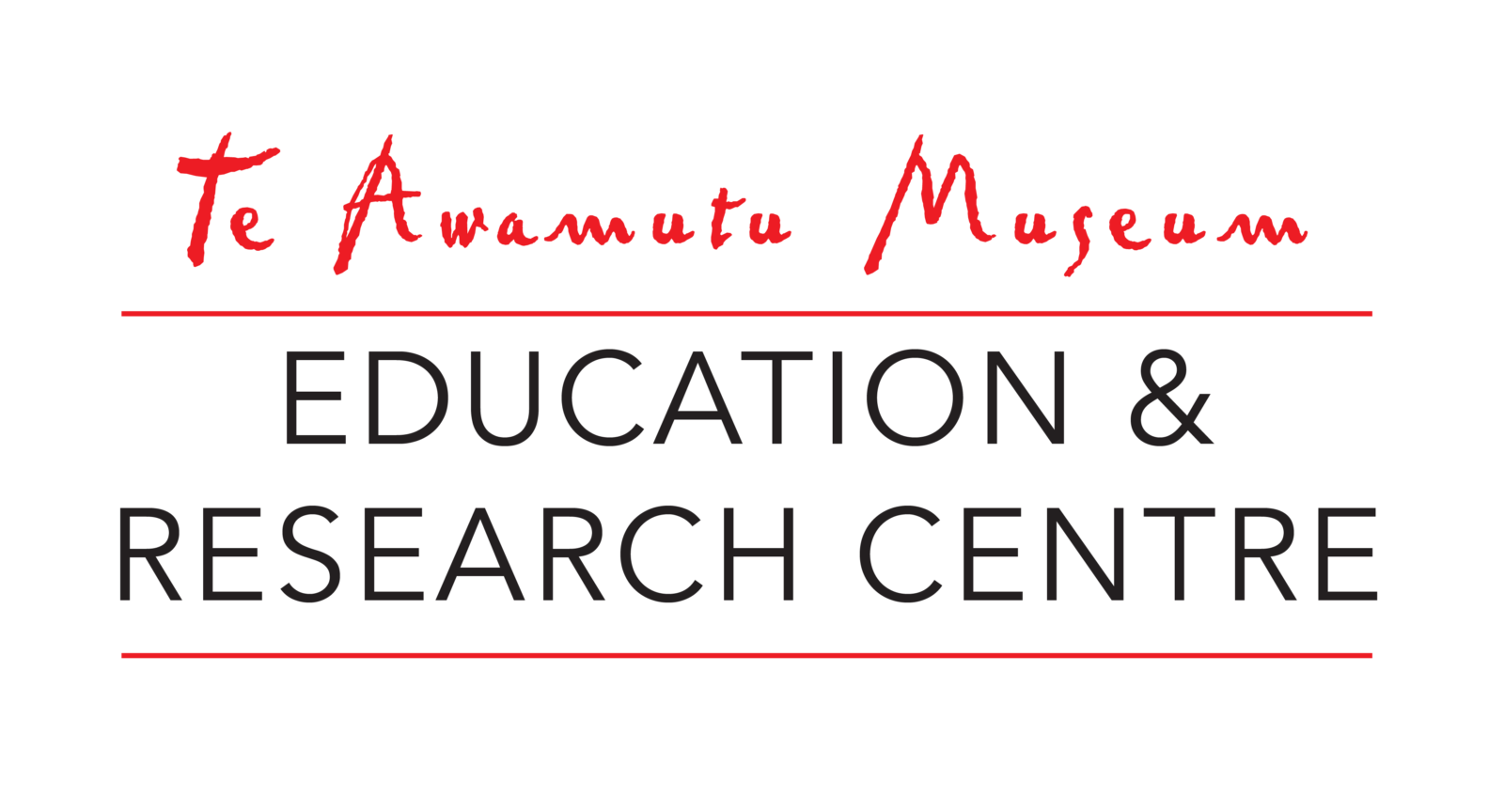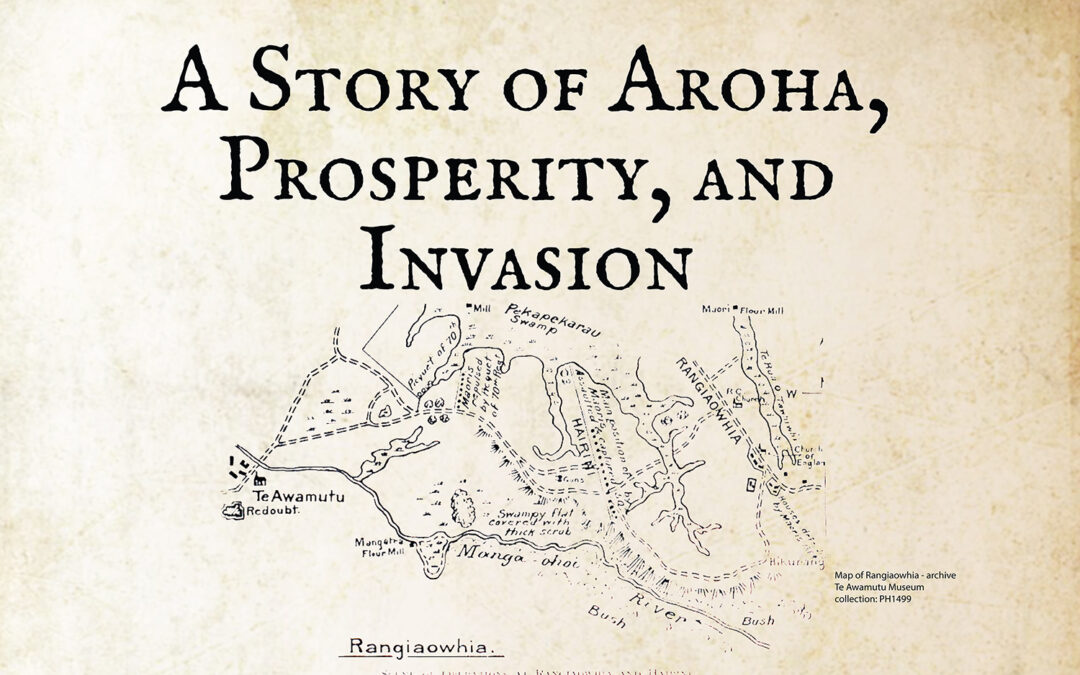Rangiaowhia, a small journey east of Te Awamutu, was a thriving and productive village, until 1864. From the 1830s Māori and invited European settlers worked collaboratively to develop this into one of the regions most important agricultural areas. One of the most significant relationships that nurtured property for both Māori and settlers was between Rahapa Te Hauata and Thomas Power.
This exhibition shares personal whānau accounts about life in Rangiaowhia during 1800s up until the British Invasion into the Waikato 1864. It also highlights letters sent by Thomas Power and Rahapa to Governor Grey 1865, expressing dismay at the soldiers treatment of the locales and compensation. A powerful story which whānau members today have instilled in their memories.
The following is an extract from one of the exhibition panels about Thomas Power, set down by his son-in-law Thomas Moisley in 1938:
“In 1845 Sir George Grey sent Mr T Power to instruct the natives in agriculture and he made Rangiaowhia his headquarters. He brought down from Auckland horses, drays and ploughs, harrows and cows. The first of these any sorts of implements in the Waikato. They used to bring goods up the Waipa River as far as the pun then up the pun River as far as what was the Ford Redoubt in the later years.
Each settlement around Rangiaowhia and Pukeatua at that time was divided by a row of peach trees to mark their boundaries. That is how Rangiaowhia got such a name for peaches which were very luxurious in those days.”

This photograph of Rahapa is a copy from an original Tin-type, also known as Ferro-type. The photograph is made by creating a direct positive on a thin sheet of metal coated with dark lacquer or enamel – which holds the photographic emulsion. This type of photograph was popular during 1860s-1870s.


